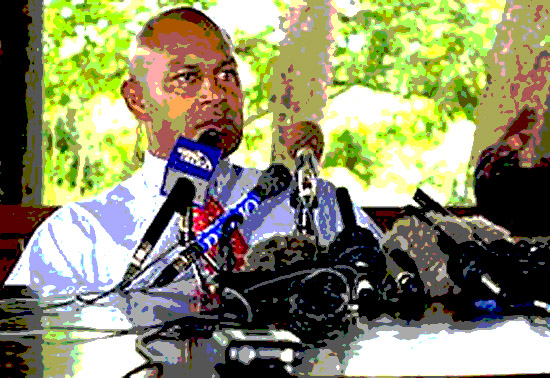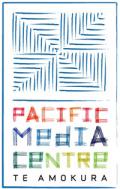
OPINION: On 15 December 2011, I graduated with a Masters in Communication Studies (MCS) from Auckland University of Technology. My thesis was based on research into George Speight’s coup of 2000 against the Mahendra Chaudhry government.
My choice of thesis was not very difficult, because as a former publisher of the Daily Post newspaper, I was aware that sections of Fiji media were not fair to Chaudhry’s government. I conducted comprehensive and in-depth content analyses of The Fiji Times during the one-year rule of Chaudhry government between May 1999 and May 2000.
Seven notable observations
The analysis and interpretations presented in my thesis showed some interesting findings. Some of the notable concluding observations from the content analysis are:
1. There was a clear discord between what The Fiji Times said and advocated in its editorials and what appeared in the papers and its news selection and writing in the newsrooms. In fact, it was comparable to Dr Jekyll and Mr Hyde approach, where the same individual tends to show two completely different and diametrically opposed opinions and attitudes.
This description aptly fitted The Fiji Times on occasions where it appeared to have one view of the editorial writer while an opposite stance was seen in the stories appearing in the news pages.
2. There was lack of co-ordination between the newspaper management and the newspaper operations. The “management” comprised expatriate policy and editorial formulators, notably the expatriate publisher and editor-in-chief, Alan Robinson and Russell Hunter (for part of the time) respectively.
The “operations” of the Fijian “gatekeepers” comprised the editor Samisoni Kakaivalu, his deputy Netani Rika and a senior Fijian newsroom team including Margaret Wise. Lack of co-ordination appears to have stemmed from newsroom control on the local staff who produced slanted headlines and the choice and “manufacture” of stories.
A case was cited where a journalist at The Fiji Times admitted that the article she wrote about a minister had been “totally twisted” and the headline was given by a member of the senior staff.
The management expatriate executives ought to be accountable for what was found as an environment which gave gate keeping duties to unqualified, insensitive and partisan newsroom staff.
Divided on race
3. The Fiji Times provided ample opportunity for opponents to attack the highest office of the country - the President and the Prime Minister. A responsible media, especially in a developing country divided on racial lines, would be expected to exercise caution and ethics and not permit a display of such disrespect to the leaders of a the nation under the guise of media freedom.
4. The number of important issues where government had to resort to letters to the editor columns to tell its side of the story was evident that there was something seriously amiss in media balance that called for equal opportunity for response. The Fiji Times failed in its duty of keeping Fiji well informed to safeguard democracy.
5. In Fiji, equitable distribution of civil service positions at all levels to reflect the country’s demographic makeup is a constitutional requirement. It seems this escaped the knowledge of The Fiji Times. That is why it allowed misinformed viewpoints without trying to point out the anomaly.
It not only ignored the lopsided racial mix in the civil service, but it itself did not abide by the general principle that the newsroom should be the mirror of the country.
There was marked favour of itaukei, not only at all levels of its news team, but also in news reporting where some 95 percent of the stories with bylines were from itaukei reporters in a racially-divided nation with Indo-Fijians comprising some 40 percent of the population at that time.
6. There appeared to be a double standard of scrutiny and criticism of different governments by The Fiji Times. Its zeal and so called investigative prowess in unearthing scandals and indulging in muckraking were seen to be inversely comparable when reporting on Chaudhry’s “Indo-Fijian” government and Qarase’s itaukei government respectively.
While the objective of this thesis was not to determine this question, the difference was so marked that at least three cases showed The Fiji Times’ favourable stance to an itaukei Qarase government.
These included appointments of a disbarred lawyer, Qoriniasi Bale, as Fiji’s Attorney-General; non renewal of work permit of the deputy Director of Public Prosecutions Peter Ridgway; and paying little media scrutiny to Simione Kaitani’s admission of sedition on the national TV programme Close Up.
These examples bring into question The Fiji Times’ media ethics and its claims of being an independent, neutral and free media.
7. The question of ethics arises about the role played by star Fiji Times reporter Margaret Wise. The person who placed very sharp scrutiny on others, especially Chaudhry and his government, was spared scrutiny by her own employers.
Newspaper credibility
The analysis showed The Fiji Times projected the Chaudhry government as an “Indo-Fijian” one which could not be trusted to safeguard the interests of the itaukei.
It failed to inform the common people about the safeguards enshrined in the 1997 Constitution which stipulates that no Prime Minister, at his own whim, could implement any changes affecting native land and laws protecting the rights of the indigenous people.
The Fiji Times also did not edit treasonable, seditious and hate-speech that was seen as derogatory to others in any civilised democracy or civilised media.
It appeared that The Fiji Times had a policy of highlighting the negatives and subduing the positives of the Chaudhry government.
It presented the government in a bad light, and effectively painted it as dishonest, untrustworthy, corrupt and undeserving as a government led by a “non-believer”.
While Chaudhry himself was also responsible for democracy’s downfall, The Fiji Times hastened and helped the process.
While The Fiji Times helped create such an atmosphere that was ripe for the removal of the government from means other than democratic, contributory factors from Chaudhry’s style of leadership hastened the process and discouraged any uprising in support of democracy.
Had Chaudhry been able to build bridges, especially with the itaukei community and its institutions, such huge support for Speight and the ethno-nationalist elements may not have materialised.
All the good things about media being a uniting force were rarely seen in The Fiji Times. If anything, The Fiji Times lived up to its colonial reputation of being anti-Indian since it was established in 1869.
The earlier studies on The Fiji Times have indicated that despite the passage of time, the partisan approach of the newspaper has not changed.
The article was first published in the Fiji Sun. Singh's full thesis is available online here.



